In today’s world of technology, we have access to a vast amount of information online. This includes social media platforms and online courses that cover nearly every topic. However, with so much information available, a person can have difficulty deciding what they want, or it can be too easy to change to another way of doing things. One of the biggest challenges people face when learning online is the lack of guidance. This often leads to riders attempting things that are beyond their abilities or their horse’s comfort levels, causing them to plateau or even regress in their development.
You will eventually find something you cannot relate to with your horse online. Your horse may respond differently than the horse online; even though the trainer might talk about how another horse may respond, covering every scenario is impossible. There are times as a trainer when what we think needs to happen based on what we see might change once we come in contact with the horse.
Even in virtual training sessions, we can still miss subtle things since we are not there to be able to feel the horse and its environment. Very few people will ever achieve more than mediocre success with online training. Online training should only be used as a means of support to in-person training.
Online training has become popular because it is convenient and cheaper. However, it is rare to find anyone who has achieved great success in their industry by taking the easy and convenient route. Most successful people have put in countless hours of hard work and made significant sacrifices.
There is nothing that can replace in-person training. Coaching in person with an instructor allows for every sense to be used and, therefore, offers many more options for learning and correction. In personal coaching, the instructor can see, feel, hear, and touch. It is impossible, or at least nearly impossible, to turn riding into an art with online training as your primary way of education.
To truly learn equestrian art, more than weekly lessons are needed. In-person coaching with an instructor is essential. You have to spend significant time with another equestrian artist farther along than you. You will soon realize that to be an artist in the equestrian world, practice alone is not enough. It is a lifestyle that must be adapted. A person must accept the time that it takes to master a craft and actively pursue the work that is required to achieve it.

